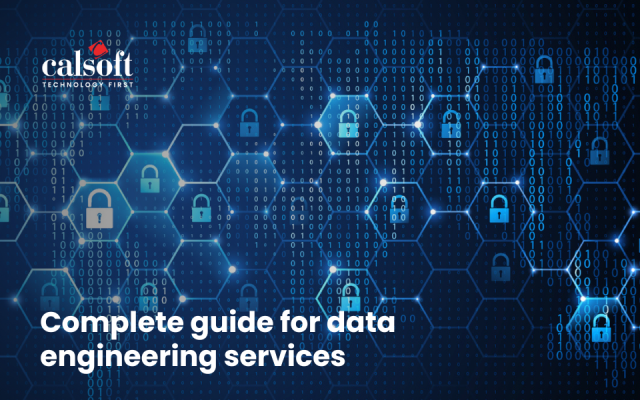The world is transforming rapidly. Customer needs and market trends are evolving faster than ever. The onus is on organizations to be nimble, pacy, and data-driven. This is impacting the tools and technologies they use too.
It’s clear that the ISVs that serve enterprises can no longer rely on traditionally built products to deliver value. They need to build products that embed data analytics and artificial intelligence (AI) at their hearts. These products must leverage data as the main driver to help customers make informed decisions, improve efficiencies, drive up customer-centricity, and enable intelligent automation. The business benefits are too obvious and well-accepted to ignore now.
In fact, according to a PwC survey, products that use AI and analytics generate 30% more revenue. Such products also enable enterprises to build a deep relationship with customers and stay ahead of their competition.
However, to build data-driven products, the VPs of Engineering at enterprise product ISVs will have to take initiative to modernize legacy products or at least improve them incrementally to keep pace with the changing times.
Here’s what the VPs of Engineering must do to modernize and build data-driven products.
Steps To Product Modernization
- Assess the existingproducts
The first step is to determine which aspects of the products need to be modernized first and what should be done later. The VP and the engineering team might face certain challenges if the product is too outdated. Also, as every product in the portfolio is different, the modernization strategy will differ too. Some products might require a complete overhaul; other products would need only partial modernization. The engineering team must ask themselves the following questions to determine the right strategy to make their products data-focused. These questions include:
- What is the goal behind embedding analytics into the product? Think beyond reducing churn. Think from a business perspective if the change will help enterprise customers improve the business outcomes. Will it help the enterprise customer become data-driven?
- Which products should be modernized in this way? Do you require a need analysis to determine if the products require modernization? Will it address the business needs of the customers? Or will the existing product work fine? The objective is to avoid following the trend for the sake of showing the transformation. It must continue to deliver business value.
- What could be the possible challenges in adding the analytics layer to the product? There are several complexities to factor in. This could involve training the team on new technologies, the complexity caused due to the co-existence of legacy and new systems, the introduction of new systems and processes, and more.
The answers to these questions will help the VPs identify the gaps in the existing products and map the phases to either improve or renew them.
- Devise a remediation strategy
Sometimes an existing legacy product can still be used after making some incremental improvements. The objective is to “data-enable” the product enough to ensure that it’s architecturally competent to run in its new environment and meet the ever-changing customer demands. This strategy has traditionally been followed to improve code quality, developer productivity, and overall compliance with standards. It’s worth examining if a similar approach can be followed to bolt on that all-important data analytics layer without having to change too much else.
Obviously, this would be relatively less expensive as there is no complete overhaul of systems and processes involved. Some of the remediation activities involve – making every component of the product compliant with REST API and web API, integrating automation, accounting for new feature deployment and upgrade scenarios, and redefining component communications from IPC or shared memory to HTTP. These components are also tested to ensure safe transactions. The VPs of Engineering must identify products that can be remediated to fit the needs of the customers.
- Design aproduct updating strategy
If the existing legacy products are too outdated and cannot be improved with remediation, the next step is to plan a product overhaul (or migration) strategy to give the product the data analytics capabilities it so desperately needs. According to McKinsey, there are six common ways in which ISVs can change the architecture of legacy enterprise products and make them data-driven. These six shifts include:
- On-premise to cloud-based data platforms
- Batch to real-time processing of data
- Pre-integrated to modular platforms
- Point-to-point to decoupled data access
- Rigid data models to extensible data schemas
- Enterprise to domain-based architecture
Whichever shifting strategy is chosen, the ISV needs to be careful while re-architecting existing platforms and infrastructure. There should not be extensive changes to workflows and it must be convenient for the enterprise users to use daily. It must also not disrupt the daily operations of the enterprise customers, in a negative way, of course! The objective is to ensure that the upgraded product architecture allows enterprise customers to integrate data analytics and AI in their operations seamlessly and stay agile and resilient in a dynamic, customer-centric environment. They must still get the full power and functionality of the enterprise tool they were used to, except it now comes with the power of data analytics built-in.
Conclusion
Legacy products require some level of modernization to become AI-based data products. This essentially means that the product must have new functionalities that meet customer demands and keep pace with the industry’s rapid changes. Given the complexity of the modernization process, the VPs of Engineering must identify a partner who can manage the end-to-end process in alignment with the enterprise’s business goals.
At Calsoft, we have been helping enterprises in their product modernization efforts through product assessment, remediation of products, and product migration.
To know more, contact us.






